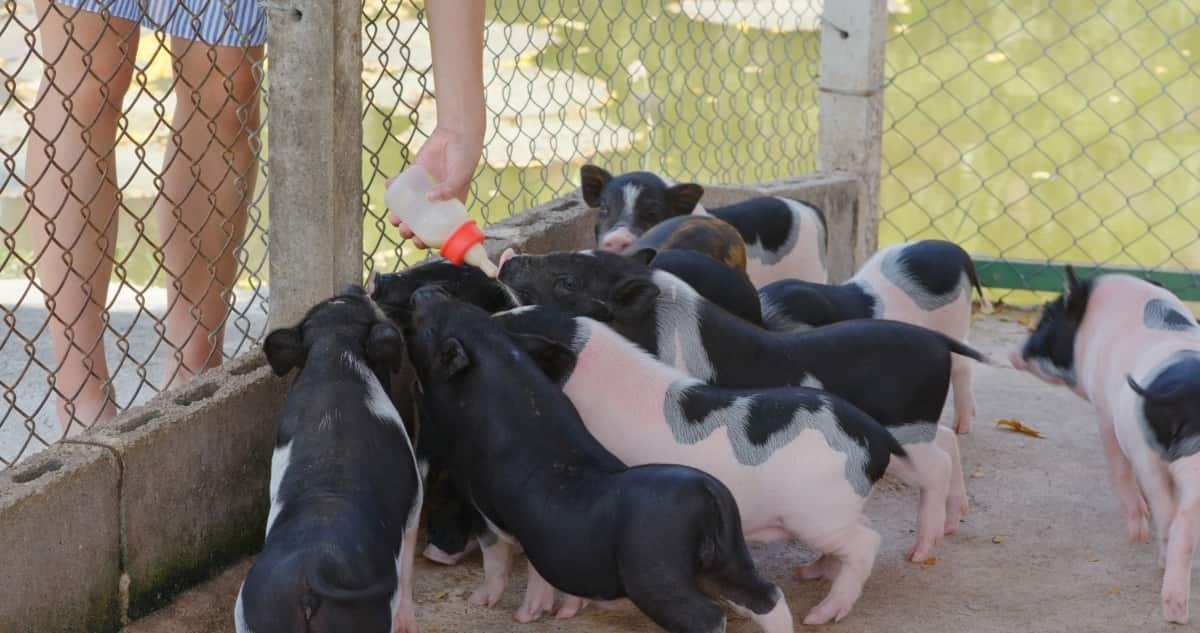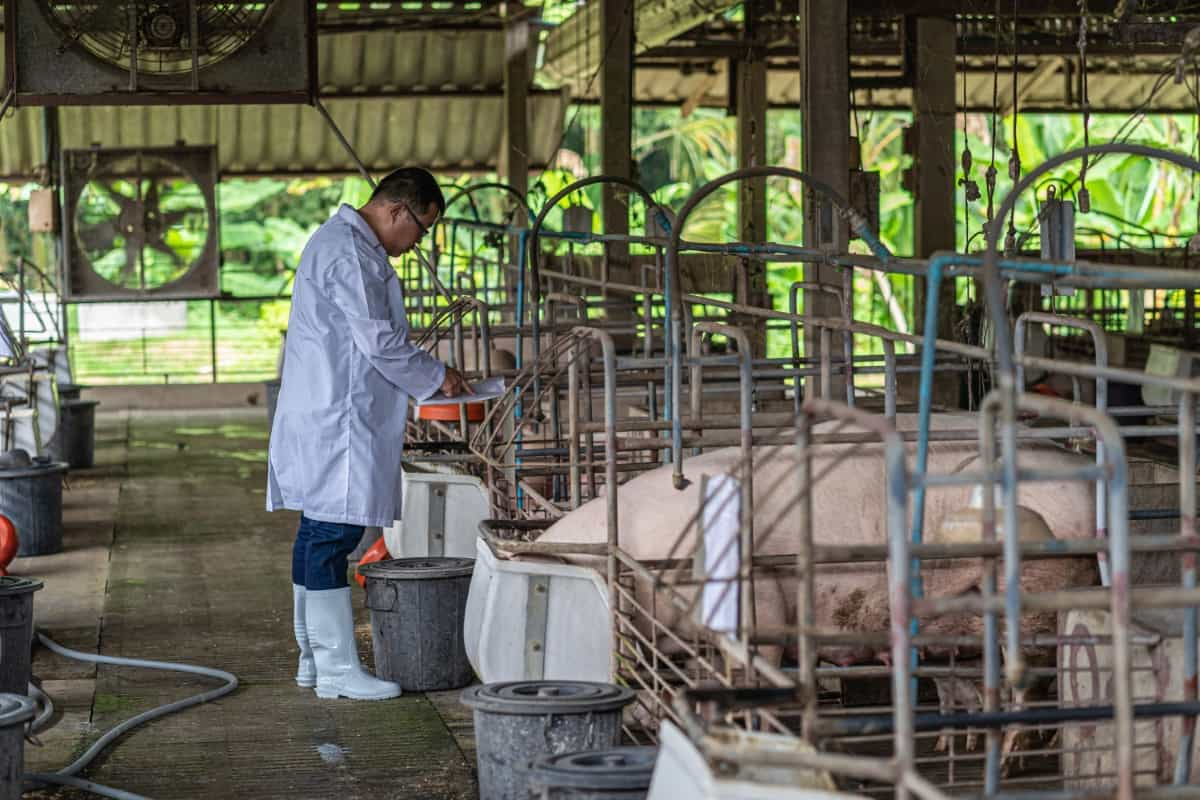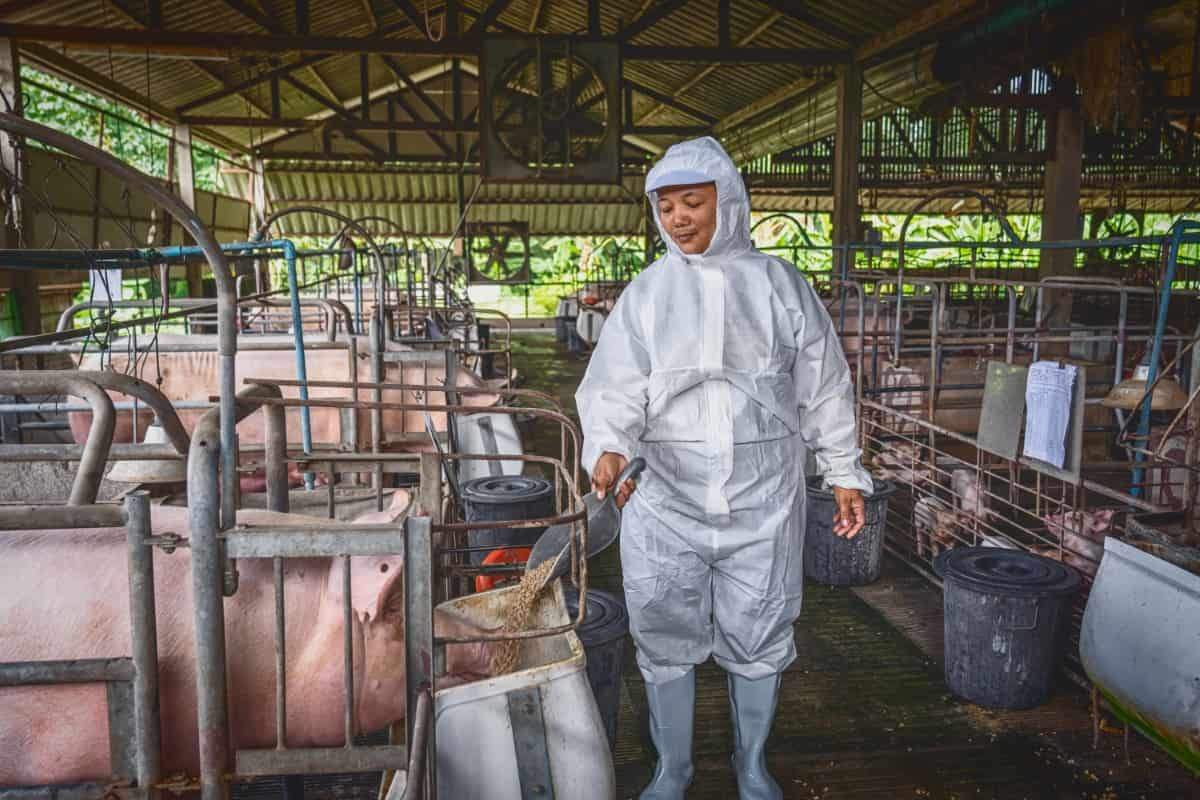Meat and milk production depends on good feed for growth, body maintenance, and body maintenance. In addition to being more affordable, local feeds can provide a complete nutritional profile if they are prepared correctly. Depending on a pig’s age, weight, and stage of development, different feed formulas can be used for pigs, and the type of feed best suited to a particular pig will vary. Generally, however, pig farmers will feed their pigs a combination of different feeds to give them all the necessary nutrients.

Optimal Pig Nutrition and Feed Formulation Strategies
Features of a Good Pig Feed Formulation
Pig feed formulations must possess the following signs and attributes to formulate and manufacture pig feed. The following criteria must be met by pig feed:
- An easy-to-digest format is essential
- It must be packaged well
- The pig feed formula must promote the growth and development of the pig
- The pig feed ingredients must be easily accessible.
- The pig feed you have developed must be affordable for farmers
- There must be a nutrients balance in the meal
- The product must be suitable for pigs
Types of Pig Feed
Various feed formulas are available for pigs, and the type of feed most appropriate for a particular pig depends on its age, weight, and development stage. Generally, however, most pig farmers will feed their pigs a combination of different feeds to provide them with all the necessary nutrients. For pigs to get the best nutrition, their diets need to be tailored according to their ages and production stages. The feed for pigs comes in six different varieties. Here they are:
- Creep or Starter Feed: This feed is given to young and suckling piglets for 2-8 weeks. Piglets can be given creep feed from seven to ten days after birth (or farrowing).
- Weaner Feed: Specifically designed to meet the nutritional requirements of young, weaned pigs up to 20 kg in weight.
- Grower Feed: This diet is prescribed for young pigs over 20 kg or aged ten weeks until they reach 35 to 40 kg in body weight. Before switching to fattener feed, you should feed this feed to a pig if you intend to fatten it up.
- Fattener Feed: Pigs over 40 kg in body weight are fed this feed until they reach 90-100 kg in market weight or are slaughtered.
- Pregnant Sow Feed: Pregnant sow feed can be fed to boars more than 90 kg in weight.
- Lactating Sow Feed: Specifically, this feed is intended for lactating sows who are breastfeeding their piglets. Pregnant sows receive it after they give birth.
Sample Feed Formula for Pigs at Different Growth Stages
| Ingredient | Starter/Creep Feed (Grams/Kg) | Grower Feed (Grams/Kg) | Fattener Feed (Grams/Kg) | Breeder Feed (Grams/Kg) |
| Maize | 550 | 250 | 220 | 200 |
| Groundnut Cake | 140 | 80 | 30 | 30 |
| Cassava peels | — | 100 | 100 | 100 |
| Brewers Dry Grains | 133 | 150 | 130 | 150 |
| Wheat Offal | — | 274 | 274 | 299 |
| Maize bran | — | — | 50 | 15 |
| Soybean Meal | 90 | 50 | 20 | 50 |
| Palm Kernel Cake | — | 62 | 150 | 120 |
| Bone meal | 31 | 28 | 20 | 30 |
| Salt | 2.5 | 2.5 | 2.5 | 2.5 |
| Methionine | 1 | 1 | 1 | 1 |
| Pig Premix | 2.5 | 2.5 | 2.5 | 2.5 |
Considerations to Improve Feed Efficiency and Reduce Feed Costs
Protein Source and Crystalline Amino Acids
Standard protein ingredients (such as soybean meal) are generally too expensive and wasteful to meet amino acid requirements. There has been an increase in crystalline amino acid availability, such as lysine, methionine, threonine, and tryptophan. These products can be used to replace a portion of protein-yielding ingredients. In addition, animal-based proteins, which are the most expensive, should be included. The performance of pigs can often be improved by removing animal products from the diet and replacing them with plant-based foods.
In case you missed it: Feeding Corn to Pigs: A Step-By-Step Guide

Phase-Feeding
Using phase feeding at multiple stages of production allows for more tailored diets to be fed. Nutrients are not over- or under-supplied by providing multiple dietary phases as could result from feeding a single diet, resulting in significant savings. Savings, however, become less significant as the number of phases increases. Even though more diet phases may improve feed efficiency and feed costs, there may be no noticeable difference in growth.
Split-Gender Feeding
Growth stages differ in nutrient requirements, so barrows and gilts require different nutrients. Weight gain and efficiency are lower in barrows than in gilts. Account for this by formulating diets containing less lysine and energy for barrows. In phase feeding, the goal is to ensure the pig receives the right nutrients.
Least-Cost Formulation
In every diet, consideration should be given to the cost and potential performance of the pig, and price changes should often be considered when reformulating. The economic analysis of the diet and the performance analysis of the animal are both crucial parts of the equation since the lowest-cost diet may not produce the highest margin over feed cost. Break-even costs should be known.
Re-Evaluate Safety Margins
In addition to safety margins, nutritionists often include safety margins in nutrient levels to account for variations in ingredients, feed mixtures, and pig requirements. However, a large safety margin can result in significantly higher feed costs with little return; reducing safety margins can save money. You can reduce reliance on large safety margins by accurately identifying your pig’s nutrient requirements and consistently evaluating ingredient nutrient content.
Best Method of Feeding Pigs
Porks can be fed in different compartments of an automatic hog feeder by providing them with grains like corn on the cob, wheat, or barley, a protein supplement, and a mineral-mixed ration. The waterer and pig feeder are automatically operated so that task time can be drastically reduced. You can feed leftover garden produce, rubbish, and other items into a trough. If you purchase iron trough ends, you can easily create this.
In case you missed it: Ultimate Guide to Start an Organic Pig Farming at Home

Paper, soap, glass, and dishwater should be kept in separate containers. Don’t feed trash over three days old. When vitamin C is given to pigs, they gain weight and grow larger. A diet containing 800 grams of ascorbic acid, or vitamin C, will speed up pigs’ growth compared to regular diets. For more information, read about feeds that can make pigs grow faster and bigger.
Conclusion
Feed is crucial in converting subsistence pig husbandry into market-oriented pig production. The maximum return or live weight increase can be achieved in less time if the pigs are fed nutritionally balanced feed. Supplementation or a nutritionally balanced feed can be used if nutritionally balanced feeds are unavailable.
- Feed Your Flock for Less: Top 10 Tips to Save on Chicken Feed
- Ultimate Guide to Ossabaw Island Hog: Breeding, Raising, Diet, and Care
- Hatching Answers: The Top 10 Reasons Your Chickens Aren’t Laying Eggs
- Eggs and Economics: Breaking Down the Cost of Raising Backyard Chickens
- Defend Your Greens: Proven Methods to Keep Iguanas Out of Your Garden
- Ultimate Guide to Cinnamon Queen Chicken: A Comprehensive Guide for Beginners
- Ultimate Guide to California Tan Chicken: Breeding, Raising, Diet, Egg-Production and Care
- Ultimate Guide to Marsh Daisy Chicken: Breeding, Raising, Diet, and Care
- 10 Types of Chicken Farming Businesses You Can Start for Profits